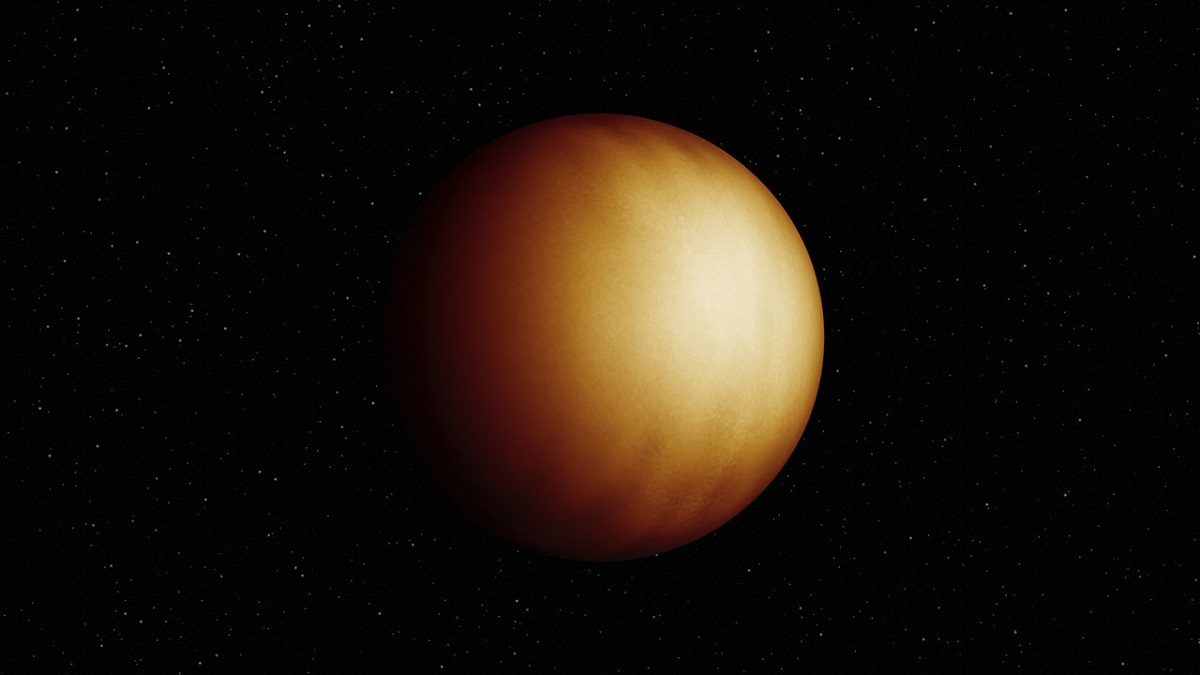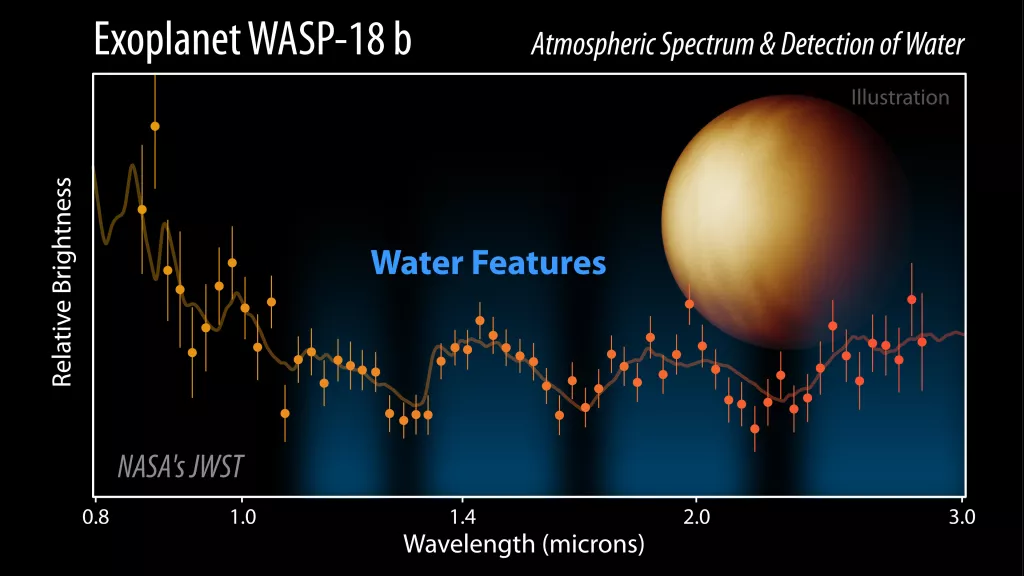James Webb has discovered water in the atmosphere of the nearby red-hot giant planet WASP-18b, which is 10 times more massive than Jupiter

The James Webb Space Telescope continues to study the universe. Scientists recently used it to detect water in the form of steam on a giant planet, which is relatively close to us.
Here's What We Know
The study once again confirmed the excellent resolution of the instruments aboard the space lab. The exoplanet where the water was discovered is called WASP-18 b. It's 400 light years away. It was discovered in 2008 using several telescopes, including Hubble.
WASP-18 b is very close to its star and makes a revolution around it in 24 hours. The distance between the planet and the luminary is only 3.1 million km. For comparison, Mercury is 63 million km away and the Earth is 150 million km from the Sun.

Scientists at the National Aeronautics and Space Administration (NASA) say that because of the high temperature (2700 degrees Celsius) water molecules are broken up. However, a small amount of water is still retained.
It is also worth noting that WASP-18b is constantly turned to the star by one side. Because of this, the temperature on the opposite side is 1,100 degrees Celsius lower. Scientists will now study the reasons for the drastic difference, as there must be a factor preventing the heat from spreading evenly.
Source: space